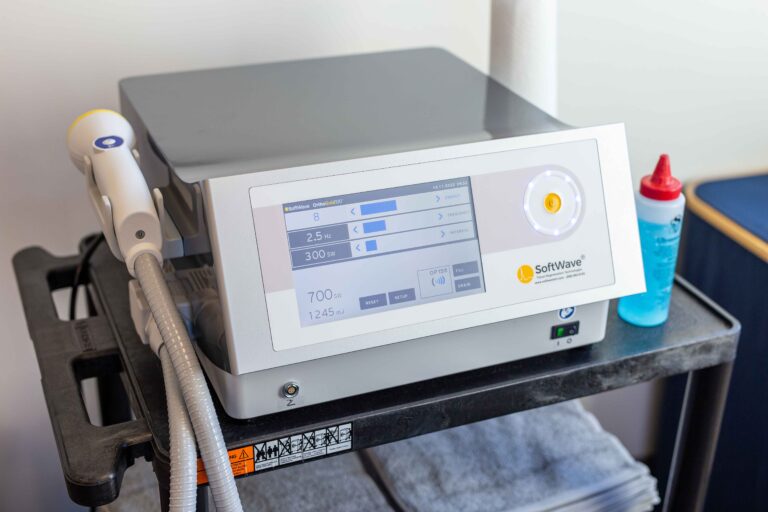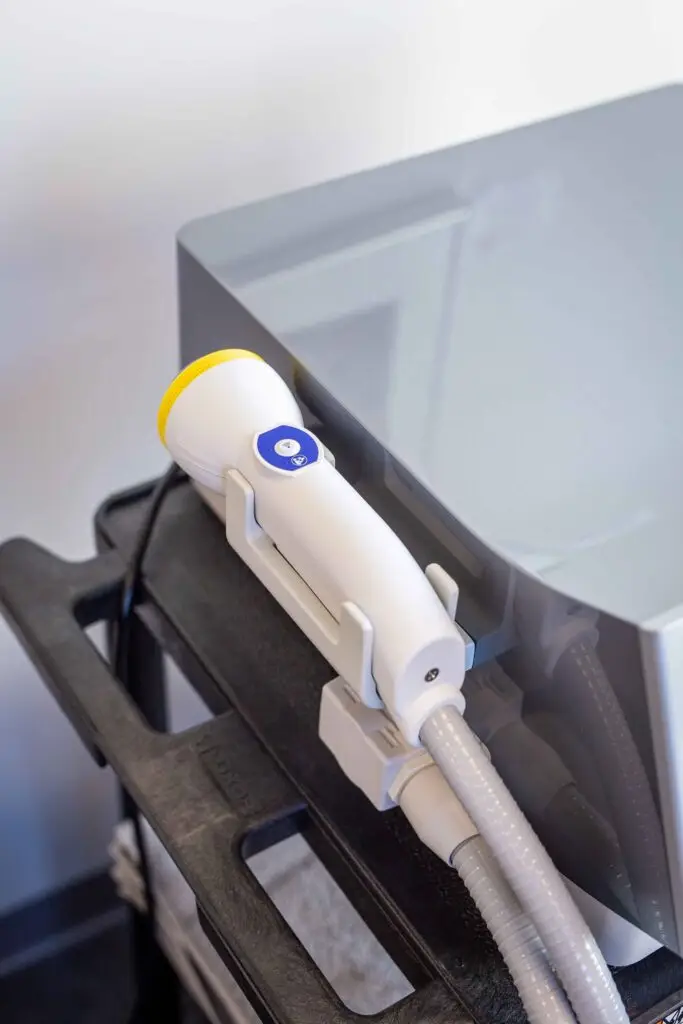Have you been thinking about trying SoftWave?
I’m going to tell you why shockwave therapy is TOTALLY worth it. This is Dr. Jeff Favero and SoftWave has been a magic wand at our clinic in Ogden, Utah since November 2022.
I’ve heard lots of good questions about it. And to better explain it to others I’ve had to study more all the time. So here is some of the cool stuff I’ve learned.
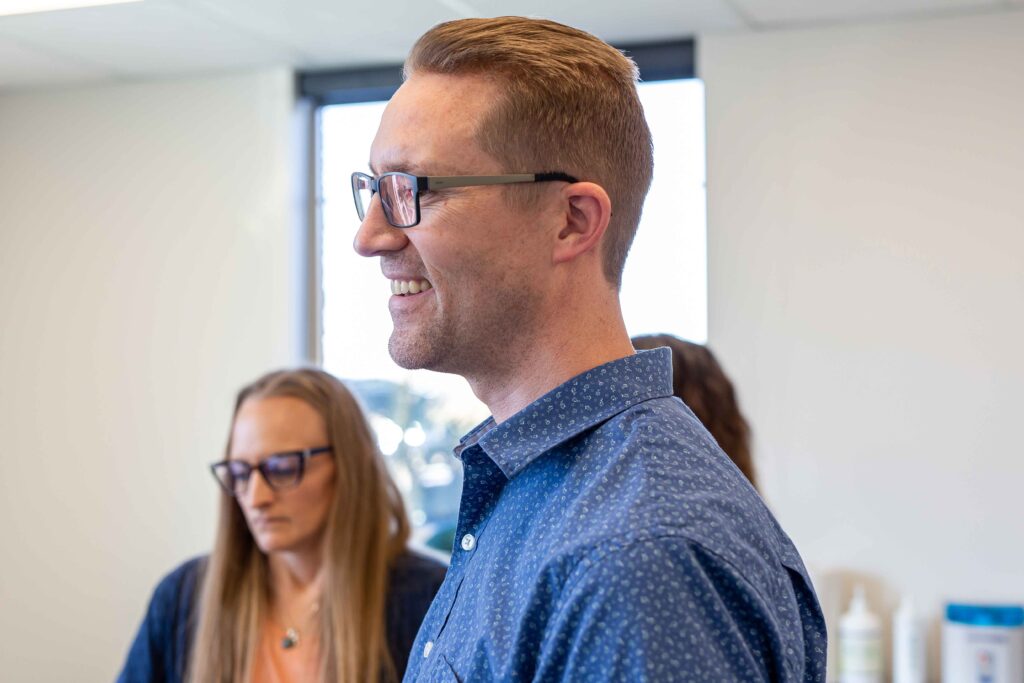
First, what is SoftWave?
Don’t get confused if I say SoftWave sometimes and shockwave other times. SoftWave is the name of the company. Shockwave is the type of treatment it is doing. It actually helps with regenerating new tissues, so the full name of the company is SoftWave Tissue Regeneration Technologies.
So SoftWave is a form of shockwave therapy that stimulates the body’s natural healing processes. The result is faster recovery from injuries and a reduction in chronic pain, offering patients a nonpharmacological, nonsurgical option to address their musculoskeletal issues.
This is amazing for chronic problems that haven’t gotten better no matter what people have tried. Including things like knee osteoarthritis, frozen shoulder, and foot neuropathy. It also helps for recent injuries to the bones, nerves, or soft tissues. Because it initiates a biological response in the body, it is doing more than just pain management. We’re talking about stem cells repairing an area. Actual change.
What's it doing?
When shockwaves are applied in the targeted tissue, they initiate a cascade of biological responses.
Pain and Inflammation Reduction: Shockwave therapy has been shown to have a direct analgesic effect, reducing pain by stimulating nerve endings. It also decreases inflammation and soft tissue calcifications.
Enhanced Blood Flow: Shockwaves promote the formation of new blood vessels (angiogenesis), improving blood circulation in the treated area. This increased blood flow brings essential nutrients and oxygen, crucial for tissue healing and regeneration.
Stimulating Cellular Repair: The mechanical stress induced by shockwaves triggers cellular responses, including increased collagen synthesis, leading to the release of growth factors and the stimulation of stem cells. This process accelerates tissue repair and regeneration.
Please be sure to do your homework when reviewing shockwave device options. Many shockwave devices stimulate microtrauma, while SoftWave is an electrohydraulic device that uses broadfocus energy waves to reach wider and deeper without microtrauma.
Time for a Tour!
I want to give you a little tour of the SoftWave machine. For views of the Favero Chiropractic office, click here.
Some details on the device:
- The main machine controls everything by pumping water through the hose into the applicator.
- There are these metal prongs in the middle of the applicator that create a spark. This makes the shockwave, which is an acoustic impulse. It travels like sound waves through the water into the body.
- A whopping 3,355 miles per hour! And it travels through fat, muscle, and bone at almost the same speed as through water.
- So it can go as deep as about 5 inches. At the highest energy level it reaches 2.75in wide by 4.75in deep. Kind of like a 3×5 index card (but in 3D, so more like the size of a soup can).
How does it work?
Now let’s get a little deeper and cover some of the specifics of what it does.
- Shockwaves are an acoustic impulse, so a type of sound wave. Started by a spark that creates the wave, which travels through the water to your body. But it has a hydraulic effect so is felt like a repeated tapping with each shockwave.
- This creates a shearing force on a cellular level that helps break up scar tissue and remove oxidative stresses that have built up around the cell membrane. This tricks the body into thinking there is a new injury without damaging the tissue, but helps activate an innate healing response on a cellular level. It also decreases inflammation and pain at the treatment site.
- The waves hit your cells and cause them to release signals called exosomes. These cell-to-cell communicators will trigger parts of your body (like bones and fat) to send stem cells directly to the area.
- A single stem cell can become whatever type of cell the body decides – so a new muscle cell, or bone, or nerve, and so on. As these new stem cells build up in the area it can become new muscle tissue, or bone tissue, nerve tissue, etc. So instead of temporary pain relief, like with some injections or medications, this can build up new tissue and create long term healing for the area.
- The best part is that research suggests this treatment stimulates your OWN STEM CELLS within 45 minutes of this treatment. Stem cells are the repairmen of the body. This helps attract other helper cells and reset the body naturally. These repair and helper cells are signaled to come out over the next few weeks and start the healing process to the damaged tissue.
How much does it cost?
- The initial diagnostic appointment is $49 for one area and $79 for two areas.
- The main thing to decide for the first visit is one area or two areas?
- One area could be a shoulder, or the neck.
- And two areas could be both knees, or the low back and the right hip.
The areas of focus and the appropriate number of shockwaves are determined during this first appointment. That’s how we determine the pricing for future appointments. It’s a costly therapy, but that’s because it’s so amazing! It’s not just about temporary pain relief, but focused on healing and recovery. Lasting change.
Ready to start feeling better?
What happens on the first appointment?
After the quick paperwork you’ll meet with me, Dr. Favero, in the exam room so I can gather your history and perform a brief examination. This will include some simple movements to test the area.
We call your first appointment the Diagnostic Treatment because we’re discovering where the problems are while also providing treatment to the area.
Basically, we are finding out if you are a good candidate for treatment.
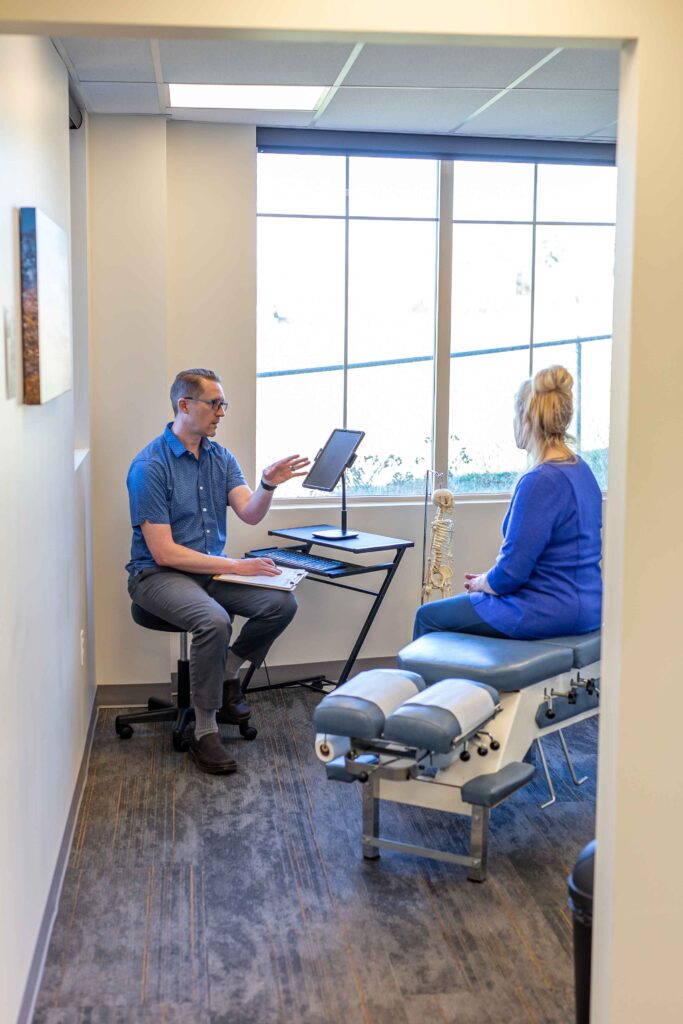
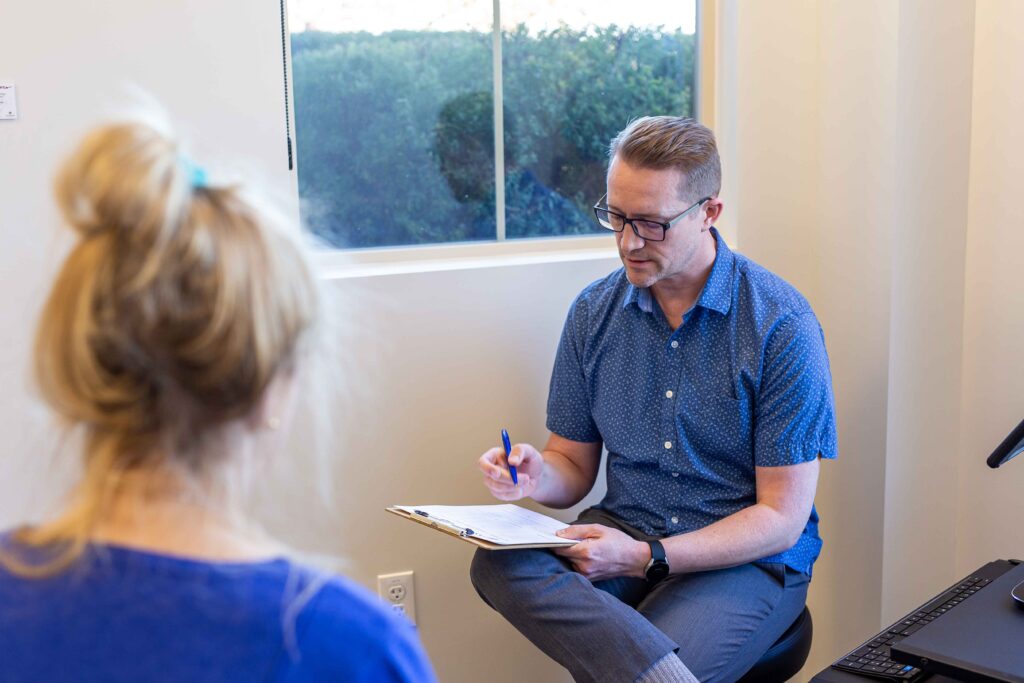
We know this by 3 things:
- First is if we find damaged tissues. It tells us through pain as we test the area.
- Second, we’ll do some tests before and after treatment and see if you notice any improvements. It doesn’t have to happen, but it’s just one more indication that SoftWave is a good fit for you.
- Third is probably the best way of knowing. Before your next visit you pay attention to how it feels with some of your normal activities. You can test it in lots of ways we can’t here in the clinic.
What does it feel like?
SoftWave uses an acoustic shockwave to find the damaged tissue and recruit stem cells to help the area heal.
When we go over healthy tissue with no injuries, you just feel the “tap” from the shockwaves. No pain. Just a little tap, tap, tap on the spot. When we locate damaged tissues, or injured areas, we’ll know because you will feel pain in those spots. So that is kind of our goal in this first appointment: to find and mark those spots. We will diagram them with big and little X’s. That will be our map or game plan, to go over all of these injured tissues during each of the following 8 visits.
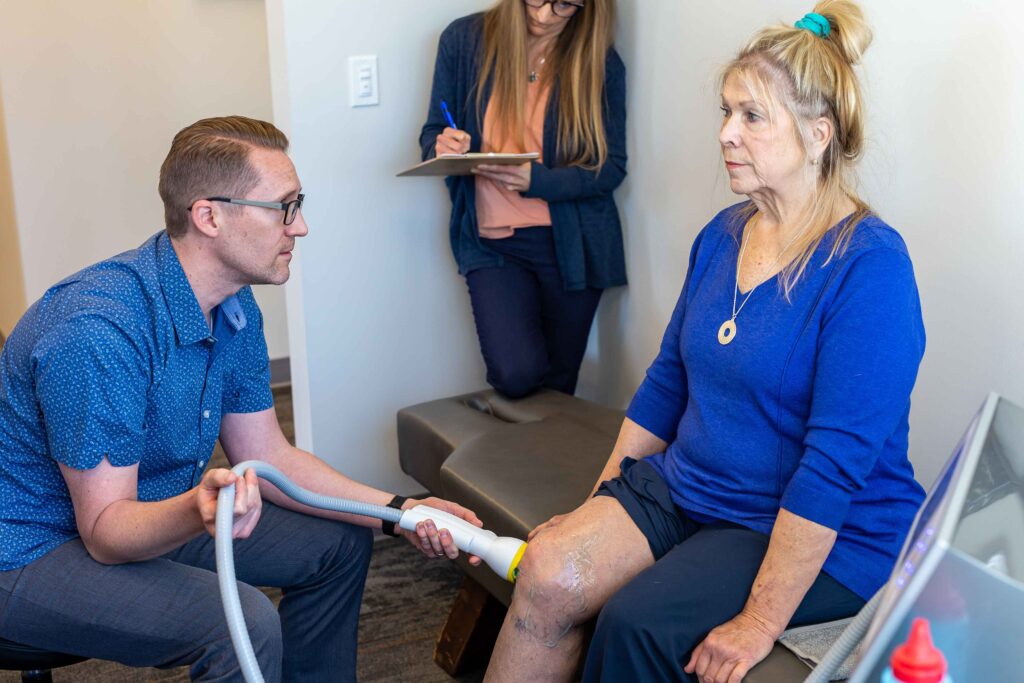
It’s a very focused therapy. We find the worst area that someone needs help with and we move as little as 1 inch at a time to find the bad spots in that area. It involves some pain to find and treat these areas, but patients usually notice an immediate relief before leaving the clinic.
We’ll test into nearby areas as well. This is because so much can be involved, and bodies can have complicated responses. Especially for chronic issues that lead to altered gait and compensation patterns.
Yes, SoftWave can be painful, but never more than you want to handle. We have a good way of managing this as we communicate with you during the diagnostic procedure.
Our goal is for you to get what you need while still being comfortable and happy with the experience.
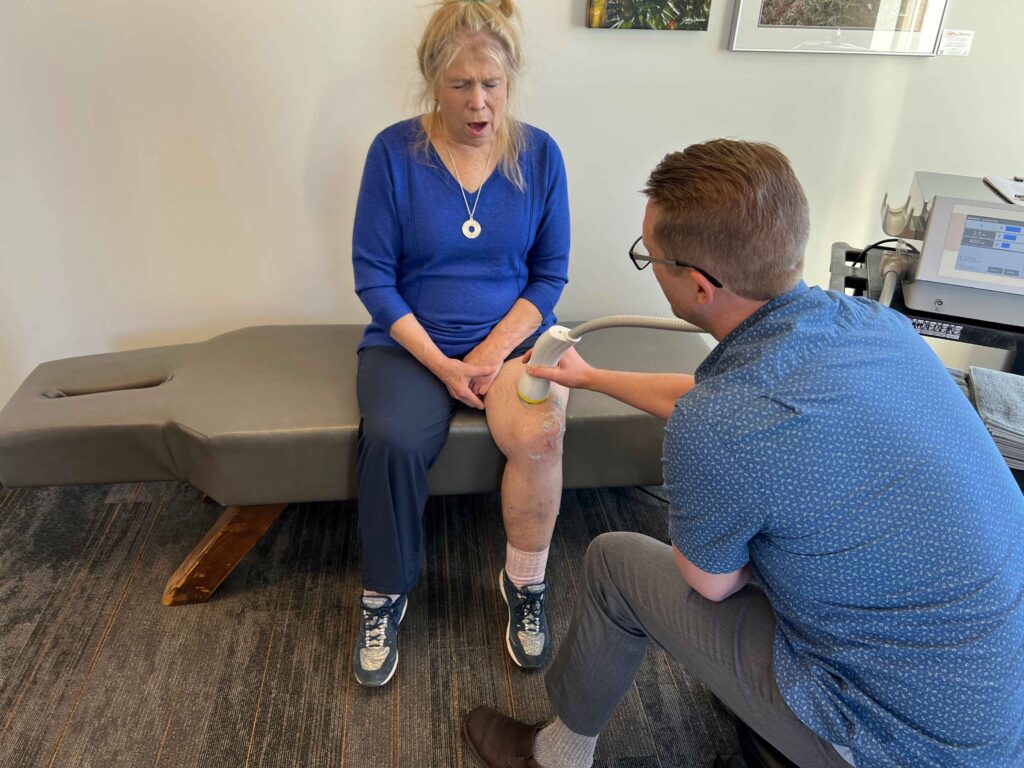
How long does it take?
The first appointment is for diagnosis and also includes treatment of the damaged area. Might take around 30-45 minutes. Then it is an 8-treatment protocol. Those appointments are more focused and faster, around 10-15 minutes. 2x/week for two weeks and then 1x/week for four weeks.
Another common timing question is “How long does it last?”. Patients want to know how long the improvements last before benefits wear off. Here’s my usual response:
- Actually, this is different from injections or medications that focus on pain and then just wait to see how long before that pain comes back again. This focuses on healing and recovery. So instead of noticing the pain get worse over time we see it getting less and less over time. That’s because the TRUE healing with Softwave will be 8-12 weeks after each treatment, when the maximum amount of stem cells have been produced and migrated to the treated area.
- How long does it last? It could be permanently improved. Every BODY is different. It depends on how many injuries and surgeries they’ve had, and how long they’ve had these damaged areas. This can’t turn back time, it can’t necessarily undo everything from a surgery or a series of bad injuries over many years. But what we want to do is find out just how much better it can get for you. Maybe it can get 50% better, maybe 100%!
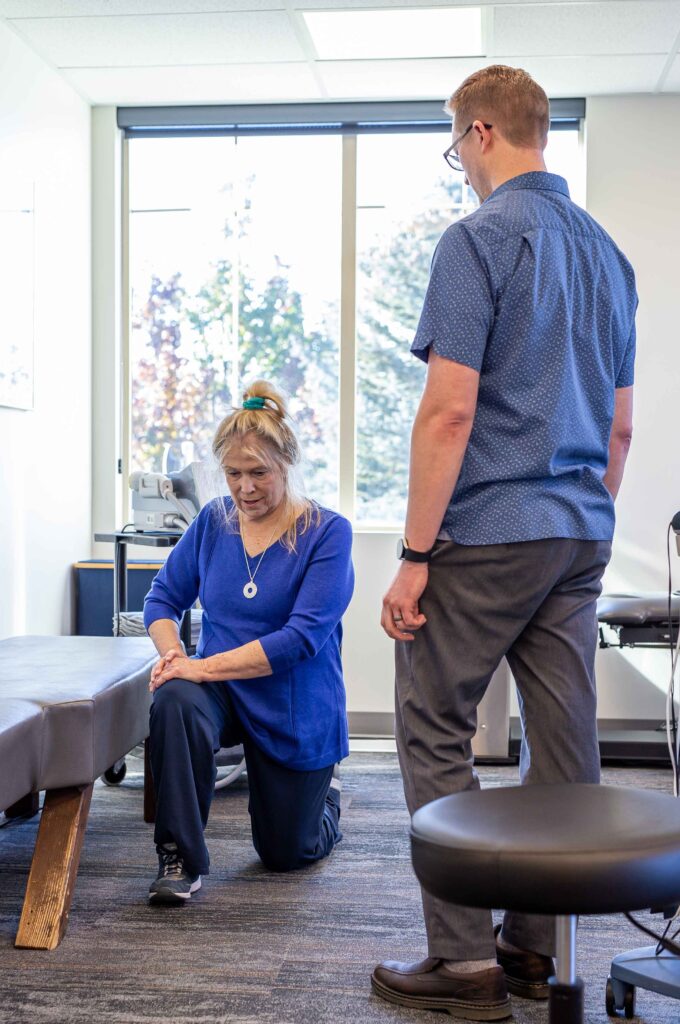
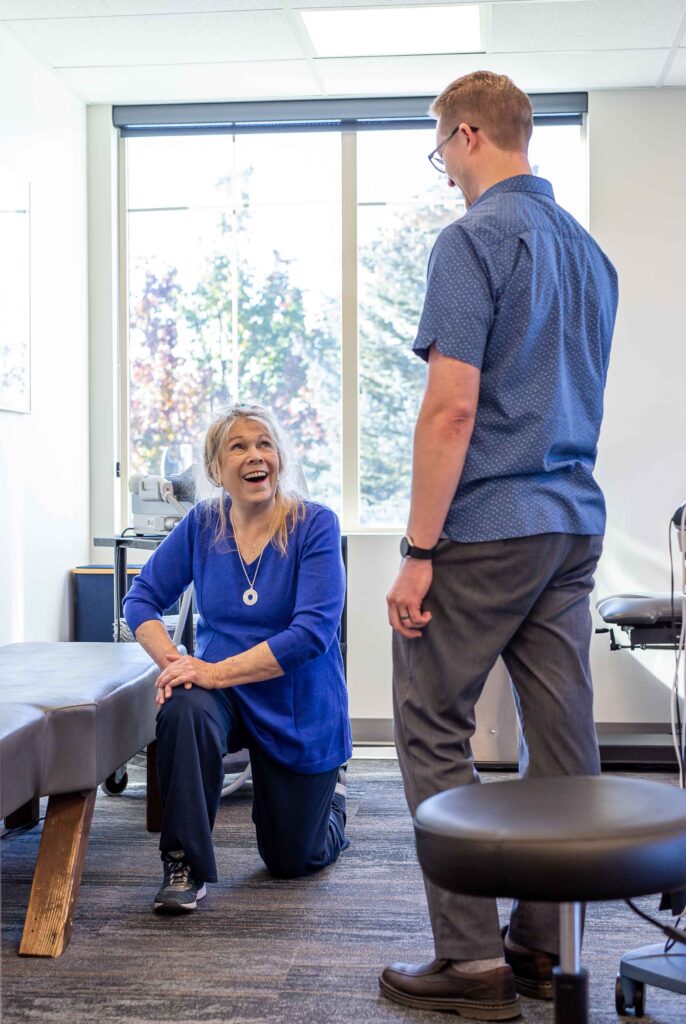
Will I get sore after treatment?
#1 – For the next 15-20 hours, you should notice the most decrease in pain and swelling, as well as an increase in range of motion and circulation. In the next day some of your normal swelling might return and cause soreness. This isn’t because SoftWave creates inflammation – but because your body noticed that temporary decrease, so when some of it comes back it’s a bit of a let down. That’s one reason we plan treatment 2 times per week in the first two weeks.
#2 – The TRUE healing will be 8-12 weeks from now when the maximum amount of stem cells have been produced and migrated to the treated area. That’s the other reason for 2x/week at first: each dose is recruiting more and more of those stem cells. And that’s where the magic happens!
#3 – Please do not ice or take any Advil or Ibuprofen. Take care and rest the next 2-3 days until your next session. Do not go do rigorous exercise the next day even though you may feel great! We just ignited a healing process and we want your body to work on that instead of working on additional stress to the treated area.
Typically, after the third treatment, we should see a 60-75% reduction in pain. After 5-6 treatments, we should have the maximum stem cell production that will continue to migrate and repair the tissue over the next 8-12 weeks. Research shows a success rate for musculoskeletal disorders of 65-91%.
Patients can have varying responses
It can be different for each person and each condition, depending on how bad the injuries were or how long it’s been a problem.
We all have ups and downs. Good days and bad days. That’s still happening during the process of SoftWave treatments. You might have days you feel big improvements and days where it feels worse. That’s totally normal. So it’s good that these treatments are spread out over time, allowing your body to adapt and change during the process.
And keep in mind, each dose of SW treatment is helping bring more stem cells to the area until it reaches the maximum benefit. After that last treatment, the benefit will continue over the next 8-12 weeks as it gradually sends fewer and fewer stem cells. Which means you will likely continue to notice things improving for 2-3 months!
Why no Ice or Ibuprofen?
Ice should be avoided because it decreases blood flow, which could slow down the migration of stem cells to the area. Technically, it causes “vasoconstriction”, a narrowing of blood vessels. When this happens, less blood reaches the injured area.
NSAIDs like ibuprofen cause vasoconstriction and should be avoided. They can also interrupt angiogenesis, which is the creation of new blood vessels. But in addition, there are parts of our body’s natural cascade of events (the normal inflammatory pathway) that get disrupted by NSAIDs. We don’t want to mess with those because they’re an important part of the tissue healing process we’re trying to stimulate with SoftWave.

